The ancient Maya civilization was known for its formidable array of weapons. From spears to blowguns, a Mayan warrior was always equipped with the best weapons available.
Like all other civilizations, the Maya civilization needed weapons to defend their lands. Eventually, however, the use of weapons also supported conflict in different city-states; meaning the eventual demise of the Mayan empire. So, what was the favorite weapon of the Mayans? And what legacy do their warfare traditions leave behind?
Table of Contents
What Were Mayan Weapons?

The classic Maya civilization used a wide range of weapons, including spears, blowguns, and slings. Most of the weapons were crafted from strong stones, like obsidian and chert. The stone was shaped into spear points or darts. On the other hand, the clubs and bows were made from the wood collected around the city-states. Many ancient Maya weapons were therefore a combination of stone and wood.
The Maya weapons were not just made of obsidian or chert stone by coincidence. These were abundant natural resources and some of the hardest and sharpest stones around – perfect material for the Maya civilization to make weapons with.
READ MORE: The Ancient Weapons of Old Civilizations
Obsidian and Chert
Obsidian stone is a sort of volcanic glass, known for its razor-like edges and its long durability. It forms when lava cools rapidly, creating a smooth, hard, and glassy substance. Because it was so light, obsidian points could easily be used to decorate a wooden stick and make a spear. Obsidian, also, had religious implications for the Mayans.
On the other hand, chert was readily available across the Mayan area and was a close second when it comes to materials used for making ancient Mayan weaponry. It is less sharp than obsidian, however, but it is a bit harder and therefore more durable.
Also, while obsidian only comes in black, chert can be found in several different colors. This gave the Mayan culture a way to express themselves through their weapons.
The Elite and Warfare
Through the use of obsidian bifacial thinning flakes, archaeologists can tell a fair bit about the usage of obsidian; by who, where, and when. At the Aguateca archaeological sites, small bifacial thinning flakes were found in both noble and non-noble graves. Other Maya cities also show the same patterns.
According to the scientists, this is a good indication that at least some rulers and artisans from the city served in the army.
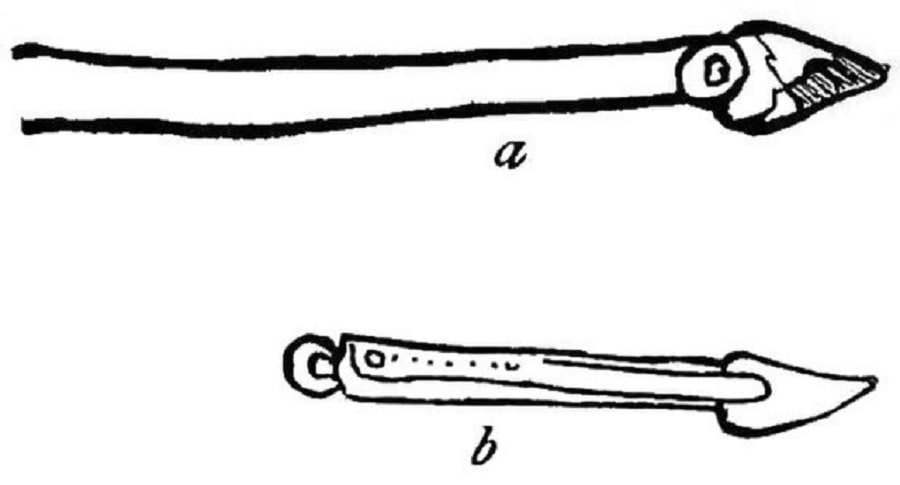
What is the Famous Mayan Weapon?
The atlatl, also known as the spear-thrower, was an important weapon utilized by the Maya civilization. Actually, it’s potentially the most famous one. According to cultural anthropology, the atlatl was a handheld device used for propelling spears or darts with increased force and accuracy. It consisted of a long, narrow wooden shaft with a hook or spur on one end.
Its effectiveness in combat was unparalleled, making it the deadliest weapon in Maya warfare. By utilizing the leverage generated by the device, Mayan warriors could launch projectiles with greater speed and distance.
The weapon provided several advantages in combat. Its design allowed for a more efficient transfer of energy from the user’s arm to the spear, increasing the projectile’s velocity.
The importance of the atlatl can also be seen in the hunting habits of the Mayans. It was an easy tool to approach their prey from a safe distance, assuring that they wouldn’t be attacked when they were hunting dangerous animals like jaguars.
While the macuahuitl was also a famous weapon within the arsenal of Maya weaponry, the atlatl was the one that was truly developed and used by the Mayans. That is to say, the macuahuitl was not exclusively a Mayan weapon since it was widely used by several Mesoamerican cultures.
Usage of the Atlatl
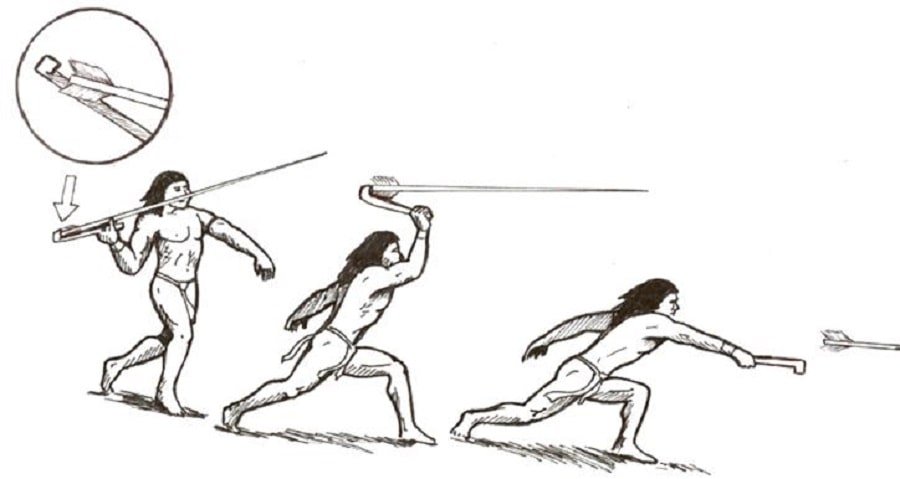
The atlatl was certainly the most popular among the long-distance weapons of the Mayans. The spear or dart was placed on the shaft of the weapon, secured by the spur. The user had to hold onto the opposite end and channel its energy so that the arrow or spear could be thrown with the greatest accuracy.
So, the atlatl was a prominent weapon in Mayan culture. Its design and functionality allowed for enhanced projectile propulsion, providing Mayan warriors with increased range, speed, and accuracy in combat.
Actually, a spear reportedly could pierce the Spaniards’ metal armor – the people whom the Mayans had to fight after the invasion of the Americas in 1492.
READ MORE: Who Discovered America: The First People Who Reached the Americas
It wasn’t easy to use the atlatl properly, however. A lot of skill and practice was needed to make it work like it was supposed to. Mastering the technique of using the atlatl involved precise coordination of body movements and timing to achieve optimal force and accuracy.
Therefore, experienced atlatl users were highly regarded in Mayan society and sometimes grew to become important Mayan leaders.
What Weapons Did Mayans Use?
Outside the atlatl, the Mayans employed a diverse range of weapons. Both close-range weapons and long-distance weapons were popular, including the macuahuitl, spears, slings, the bow and arrow, and blowguns. These weapons were crafted with ingenuity, skill, and an intimate knowledge of the materials available to them.
Close Range Weapons
The Mayans used a variety of close-range weapons. Whether it was the sharp edge of the macuahuitl or just the everyday knife and daggers, the close-range weapons played an important role in endemic warfare, which eventually was the reason for the Maya collapse.
Obsidian Blades

As indicated earlier, the obsidian stone was a popular resource in the post-classical era of the Mayans. Obsidian blades had multiple applications in society. They were used as weapon components, such as spearheads, or incorporated into the macuahuitl: a wooden sword with embedded obsidian blades along its edges.
Additionally, obsidian blades were employed as tools for cutting and carving various materials like wood, bone, or food. While obsidian stone was abundant in the Maya area, it wasn’t distributed very evenly. Large trade networks across the empire made sure that there was sufficient obsidian stone for anyone.
There was also an important ritualistic and symbolic significance to it. The stone was associated with divine power and some obscure bloody rituals. Leaders of certain rituals, such as priests or shamans, used obsidian blades for ceremonial purposes, which also included human sacrifices.
Macuahuitl and Other Clubs
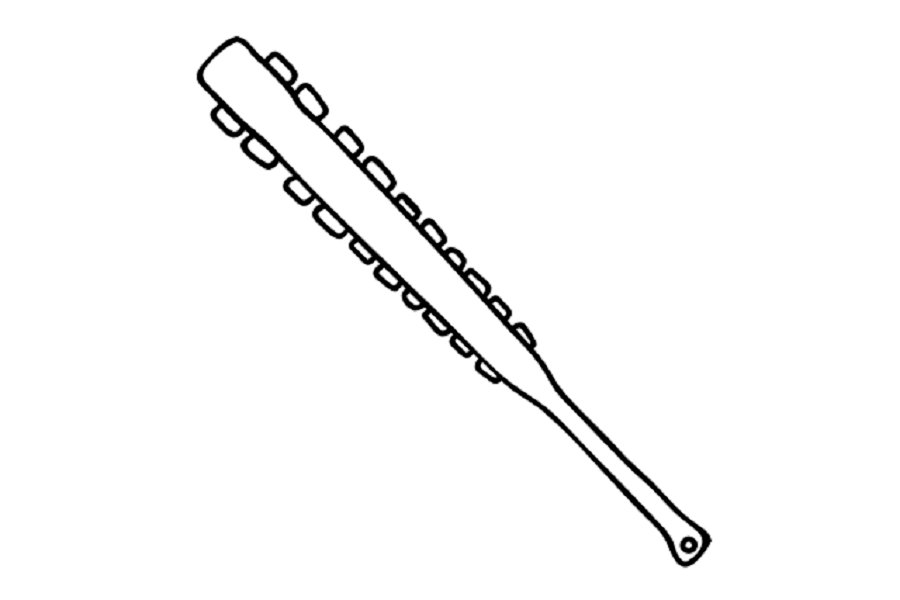
The macuahuitl was made of obsidian stones. It’s a fascinating weapon that was used across the ancient Mesoamerican continent, for example also by the Aztecs. The macuahuitl was essentially a wooden club that was adorned with sharp blades made of obsidian.
READ MORE: The Aztec Empire: The Rapid Rise and Fall of the Mexica
The obsidian blades were securely fixed to both sides of the wood, forming a formidable weapon that was capable of inflicting severe injuries.
The macuahuitl was truly one of the most feared weapons used in ancient Mesoamerican culture. However, the archeological evidence surrounding the use and popularity of the macuahuitl in Maya culture is still debated.
There is limited evidence and the available sources interpret the evidence in a variety of ways. The competing hypotheses include the macuahuitl as a ceremonial or symbolic weapon and not one used in warfare.
Still, there were other clubs that the Mayans used which were certainly used in warfare. The difference between these clubs and the macuahuitl was that the normal clubs just had a sharp edge on one side which was often differently attached. Also, the decorations were less evident in these other clubs.
Axes, Knives, and Daggers
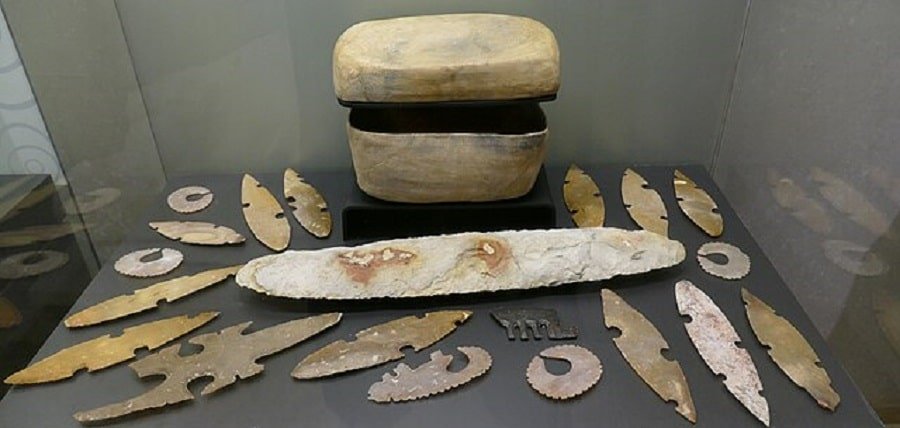
The Mayans also used a range of axes, knives, and daggers. The axes had sharp blades made of stone or metal, attached to wooden handles. They were used for chopping, slashing, and delivering powerful strikes to their enemies. They also served as practical tools for around the house and during hunting.
The knives were typically made of stone or animal bones and were convenient for hand-to-hand fighting or for stealthy assassinations.
Long Distance Weapons
Besides the atlatl, the Mayans used a myriad of other long-distance weapons. Based on the archaeological record and chert artifacts, at least four other long-distance weapons can be distinguished.
Mayan Spear

The first long-distance weapon that the Mayans used was the spear. Mayan spears consisted of a long wooden shaft with a sharpened chert small points or obsidian blade attached to one end. The spears were not just employed for throwing at adversaries since thrusting the enemy with them was also common practice.
So, the spear allowed the Maya to engage in both close combat and long-range attacks. Spears provided the warriors with reach and lethality, enabling them to maintain a defensive advantage and penetrate enemy lines.
You might wonder, what was the actual difference between the atlatl and a normal spear? Well, the atlatl was a tool used to enhance the range and force of a thrown projectile, while the spear was the actual weapon that was propelled.
So while the atlatl was throwing spears or projectiles, the Mayans also used their own hands and arms to propel the spears to the enemies. Still, the spears used for hand throwing were different from the spears used for the spear thrower.
Blowgun
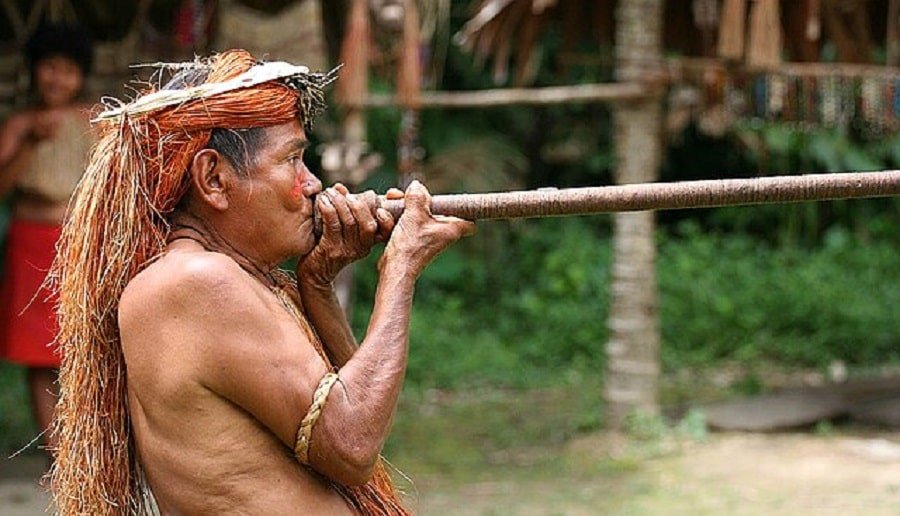
The blowgun was another notable weapon used by the Maya civilization and was known for its stealth and precision. According to academic sources, the blowgun was a long tube typically made from lightweight wood – such as bamboo – and ranged in length from 1 to 3 meters. It had a narrow bore that allowed for the propulsion of projectiles.
The primary ammunition used with the blowgun was small darts or projectiles. These darts were usually made from lightweight materials like reeds or thin wood and were often tipped with poison to increase their lethality. The poison used on the darts could be sourced from various toxic plants, including the latex of the poison dart tree.
The blowgun was operated by placing one end of the tube against the mouth while the other end had a small opening through which the darts were blown. The Maya warriors would forcefully blow into the blowgun, propelling the darts with accuracy toward their targets.
The blowgun allowed the Maya warriors to engage in silent long-range attacks, making it a valuable weapon for hunting and warfare. During warfare, it was used for ambushes and surprise attacks. The primary use was for hunting small game and birds.
Its lightweight and portable nature made it a practical weapon for the Maya people, especially in dense jungle environments where other weapons like spears or bows were less maneuverable.
The blowgun’s effectiveness relied on the skill and accuracy of the user. Maya warriors would often undergo extensive training to develop their lung capacity, accuracy, and stealth while using the blowgun. It required precision aiming and the ability to compensate for factors such as wind resistance and distance.
Sling
The sling was a simple yet effective weapon for the Mayas. It consisted of a length of cord with a pouch at one end.
By swinging the sling and releasing one end of the cord, the Maya could launch stones or other small projectiles at their enemies. The sling provided the advantage of ranged attacks, allowing the Maya to strike from a distance and disrupt the defensive walls of the enemies.
The sling was particularly useful in guerrilla warfare and ambushes, where surprise and stealth were critical.
Bow and Arrow
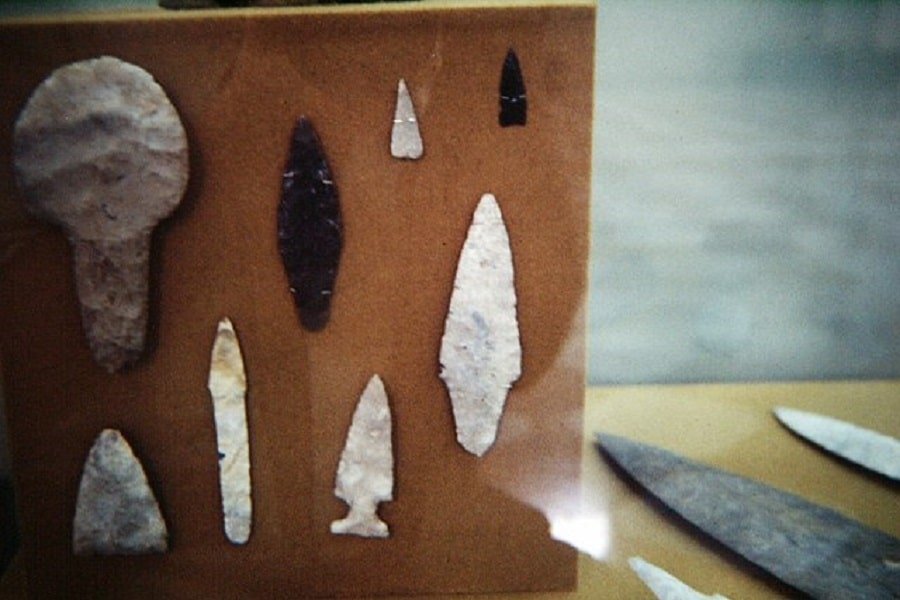
The bow and arrow provided the most accuracy and flexibility on the battlefield for the Mayans. The Maya crafted their bows from durable materials such as wood and animal sinew.
The arrows were tipped with sharp points made from bone, stone, or obsidian. The Mayans had an advanced warfare technique in which their archers played a crucial role. The unleashing of volleys of arrows weakened the enemy defensive lines tremendously and disrupted their formations.
Armor of the Mayans
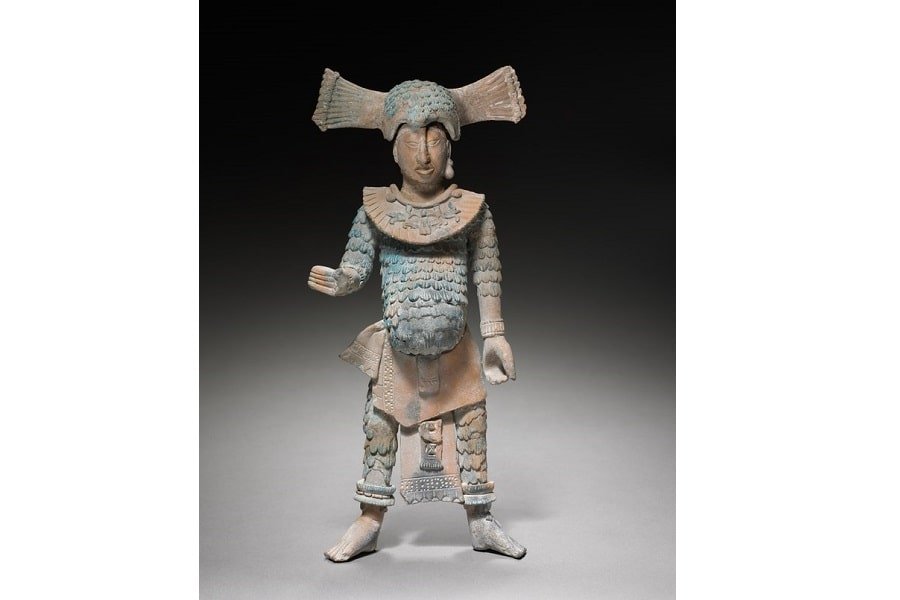
Maya cities and the overall society obviously benefited from the wide range of weaponry. However, the armor that they used was quite remarkable and shows the ingenuity of the ancient civilization.
For defense, warriors carried shields, and war veterans wore thick cotton armor treated with rock salt that could withstand obsidian. Mayas recognized the strength and versatility of cotton fibers, so they quickly adopted this natural resource in various aspects of their lives.
From clothing and household goods to the realm of warfare; cotton became a fundamental material. In fact, the use of cotton for war purposes was potentially the most important use of the fiber.
READ MORE: Who Invented the Cotton Gin? Eli Whitney and Cotton Gin Impact on America
Development and Making of Cotton Armor
We can all agree that plain cotton wouldn’t necessarily protect the warriors from the swords and arrows of their opponents. The question remains: how did the Mayans actually make cotton into something strong enough to take the blows of sharp and forceful weapons?
The development of cotton armor among the Maya involved intricate craftsmanship and careful attention to detail. Skilled weavers and artisans worked to create layers of tightly woven cotton fabric, which was the basis of the armor. The cotton fibers were meticulously twisted and interlocked, resulting in a dense and robust material.
To enhance the armor’s protective qualities, additional layers of cotton were added in strategic areas such as the chest, shoulders, and abdomen.
Rock Salt
The cotton was also treated to make it even more protective. Firstly, the use of salt and rocks helped to strengthen and harden the cotton fibers. This was achieved through a process called ‘salting’, in which case the armor was soaked in a brine solution or rubbed with salt.
Secondly, the application of rocks or minerals during the treatment process provided additional reinforcement to the armor. Smooth stones or minerals were often rubbed onto the fabric, serving as abrasives to compact the fibers and create a denser weave.
Shields
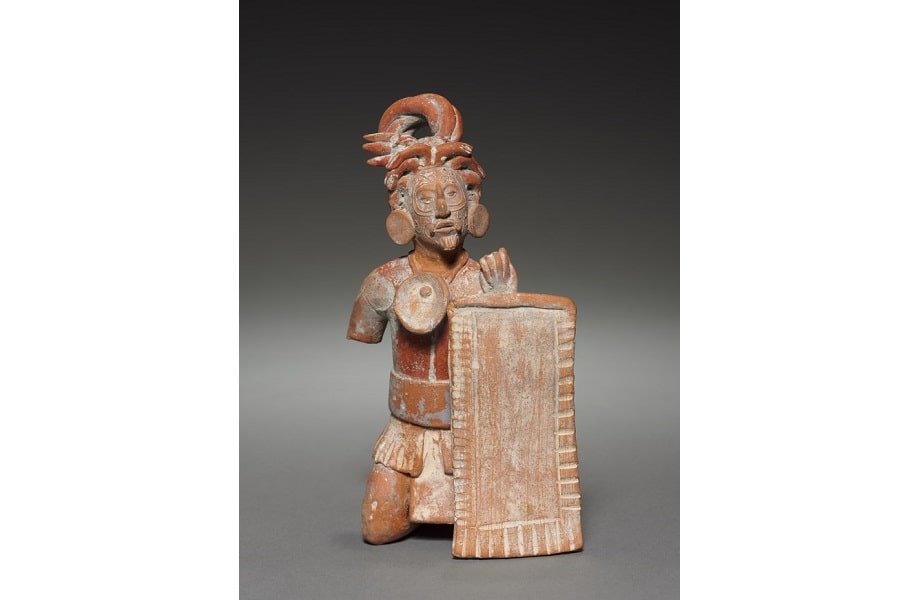
Lastly, the ancient Maya culture also used shields for protection. Their shields, however, weren’t made from cotton. The Mayan shield played a crucial role in the Mayan defense strategy. They were either crafted from wood or animal hide and provided protection against incoming projectiles and close-range attacks.
Mayan warriors relied on shields to safeguard themselves during battles, allowing them to engage in combat with confidence and resilience.
The ancient civilization built fortifications around some of their classic Maya cities, for example around Seibal and Tikal (Guatemala). Helmets were unknown and warriors wore elaborate headdresses instead. Warriors also used body paint and animal skins to show their status and intimidate the enemy.
All and all, the Mayas developed many ingenious weapons that weren’t known in other parts of the world. By specializing in creating with the resources at hand, the Mayans left a lasting legacy. After all, they were able to resist the Spanish invasion of their lands for about 200 years and many Mayans still live according to ancient principles to this day.